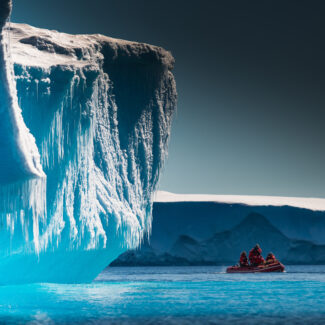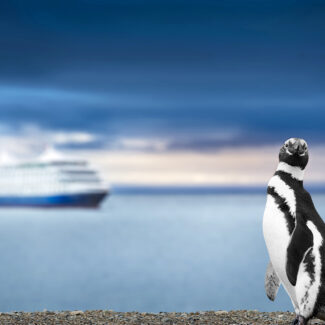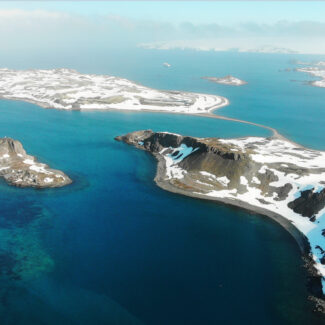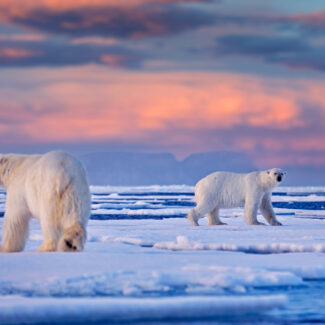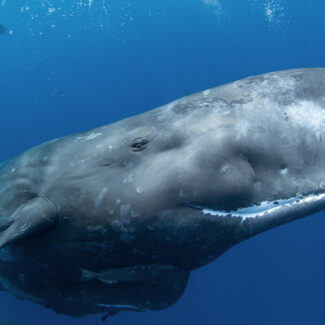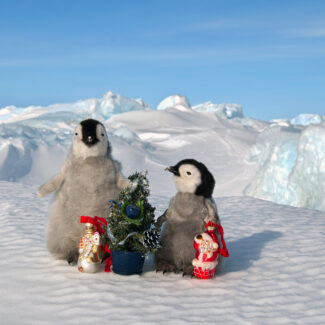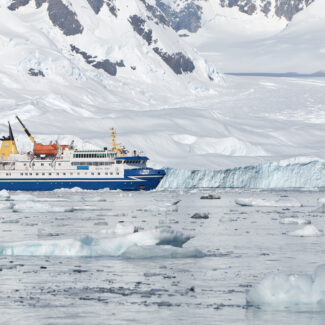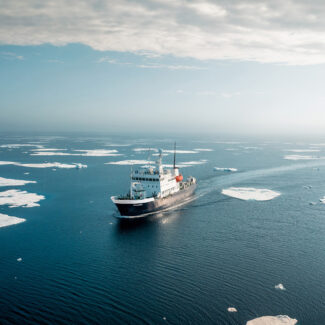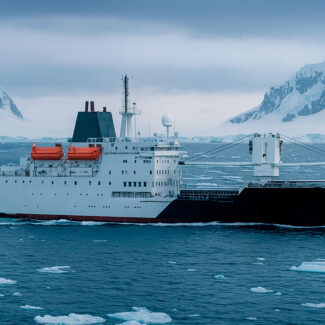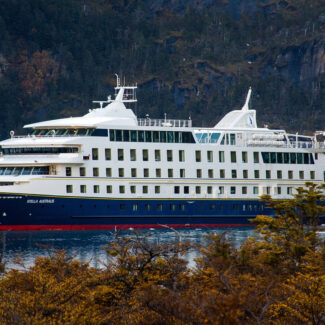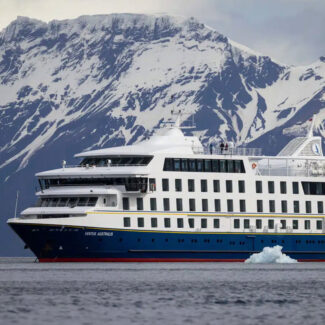Antarctic Birds: A Guide To Bird Watching In Antarctica
- Antarctic Birds
- Penguins
- Albatrosses
- Prions or Whalebirds
- Diving Petrels
- Giant Petrels
- Storm Petrels
- Shearwaters
- Antarctic Petrel
- Snow Petrel
- Southern Fulmar
- Skuas
- Terns
- Blue-eyed Shags (or Cormorants)
- Kelp Gull
- Sheathbills
- Ducks
- South Georgia Pipit
- Antarctic Birds List
- Birdwatching in the Antarctic: Hotspots, Equipment, and Birding Cruises
Birds are among the most visible and widely distributed animal life enlivening a typical Antarctic getaway. From the albatrosses and petrels of the Drake Passage to the emperor penguins of the Ross Sea, birdwatchers of both the casual and all-out obsessive varieties enjoy bucket-list action on a voyage to the bottom of the world.
Antarctic Birds
The following overviews the main birds from Antarctica and the peripheral sub-Antarctic zone. We’ll naturally mention the best-known of all, the penguins, but we’ve given that universally charming flightless crowd its own, more thorough treatment elsewhere, so this article primarily focuses on Antarctic seabirds and the handful of other groups represented.
Penguins
Some eight of the world’s 17 species of penguins can be found in the Antarctic and sub-Antarctic zones, from pintsized rockhoppers to the enormous emperor (which might as well be considered the “national bird” of Antarctica). You can read all about these charismatic creatures in our dedicated guide to the penguins of Antarctica. In general, penguin paparazzi prefer to visit Antarctica mid-December into January to coincide best with the hatching and rearing of chicks.
No visit to Antarctica is complete without witnessing the charismatic charm of its penguins! These iconic birds, from the towering Emperor penguins and their adorable chicks pictured here, to the playful Adélies and chinstraps, are perfectly adapted to the continent’s harsh conditions. Their resilience and endearing antics make them truly inspiring subjects for any birdwatcher in the Great White Continent.
Albatrosses
Greatest of all seabirds, albatrosses are the largest members of the Procellariiformes, the avian order that also includes petrels, fulmars, shearwaters, and other “tube-nosed” birds adapted to long stints over the open ocean. The majority of Antarctica’s birdlife, not counting penguins, falls within this menagerie. The rough translation of procellariiform is “storm-bird” or “gale-bird,” an apt description; the moniker of “tubenoses” refers to the modified nostrils of the upper bill that excrete salt, thereby allowing these birds to drink seawater.
While four species of albatross are found in the North Pacific, the Southern Hemisphere—and the Southern Ocean in particular—is the greatest realm of albatross diversity. Three genera are found in Antarctic and sub-Antarctic waters:
- Diomedea, the “great albatrosses,” including the wandering and royal albatrosses;
- Thalassarche, the “mollymawks,” including the gray-headed, shy, and black-browed albatrosses; and
- Phoebetria, the “sooty albatrosses,” including the sooty and light-mantled (or light-mantled sooty) albatrosses.
Albatrosses, which feed mainly on krill and squid, are famous for their energy-efficient flight. They share with other tubenoses a locking mechanism in the wings that allow them to engage in dynamic soaring with minimal effort and barely any flapping whatsoever, their wind-riding ability enhanced by the sheer size of their wingspans. Certain species may circumambulate the Southern Ocean in the course of their yearly ranging, and aside from annual or biannual nesting, these birds spend their time mainly far out to sea.
The wandering albatross is the world’s largest flying bird in terms of wingspread: Its wingspan may reach 12 feet! Its close relative the royal albatross (sometimes split into two species: the northern and southern royals) is only a little bit smaller, with a wingspan exceeding 10 feet. (Hey, they don’t call them “great albatrosses” for nothing!) Wandering and royal albatrosses are quite similar-looking and often seen together around cruise ships; the wandering has a pinkish bill and mottled leading edge to its wings, while the royal is yellow-billed with whiter wing edge.
If not rivaling the great albatrosses in size, other Antarctic/sub-Antarctic albatrosses are still large birds and superlative in their own ways. The gray-headed albatross, for example—one of the mid-sized albatrosses called “mollymawks” and the one ranging farthest south into the Antarctic—is a famously swift ocean wanderer, capable of reaching speeds close to 80 miles per hour (130 kph); one gray-headed was tracked flying all the way around Antarctica in a mere 46 days.
Other albatrosses commonly seen by visitors to Antarctica and sub-Antarctic islands include light-mantled, sooty, and black-browed albatrosses.
Albatrosses may be spotted by passengers on Antarctica-bound cruise ships on the Southern Ocean as well as in coastal breeding areas, not least South Georgia, where no fewer than four species—the wandering, gray-headed, light-mantled, and black-browed—nest. This mountainous island, in fact, accounts for about a quarter of the global wandering-albatross nesting population, with Prion Island a particularly popular spot for viewing them. Just note you’ll need to time your visit outside of 20th November – 7th January (inclusive) as the island is closed during this time.
With wingspans reaching up to 11 feet, albatrosses are the undisputed masters of the Southern Ocean skies, embodying grace and endurance. These magnificent birds, like the one pictured here, spend years at sea, circumnavigating the globe on ocean currents. Spotting an albatross effortlessly gliding above the waves is an awe-inspiring moment for any birdwatcher, symbolizing the boundless freedom and wild spirit of Antarctica’s marine environment.
Prions or Whalebirds
The little prions—also known as whalebirds—are diverse and widespread petrels of the Southern Ocean, belonging to the most diverse family of the tubenoses: the procellariids. “Prion” stems from the Greek word for “saw,” reflecting these petrels’ serrated beaks. And “whalebird” speaks to the common spectacle of prion flocks accompanying great whales, feasting on small prey driven to the surface by the leviathans.
A variety of prion species, including the broad-billed, slender-billed, and fulmar, are found around the Antarctic Convergence/Polar Front and in sub-Antarctic waters. The largest of all prions (though still a small seabird) is the Antarctic prion. Often seen at sea in flocks numbering in the thousands, Antarctic prions breed on a variety of Antarctic and sub-Antarctic islands, including South Georgia and the Kerguelens, between about October and March.
Different species of whalebirds employ different strategies for feeding. Antarctic prions may pluck krill and other prey on the wing, or flutter along the surface with their bills below the surface to snatch morsels. The broad-billed prion, meanwhile, sieves out planktonic food rather like a filter-feeding whale.
Often seen in immense flocks, the delicate Prions, also known as Whalebirds, are a mesmerizing sight over the Southern Ocean. These small, agile seabirds, with their distinctive M-shaped flight pattern, filter feed on zooplankton, including krill. Witnessing a swirling “murmuration” of prions against the vast Antarctic backdrop is a truly unforgettable experience, celebrating the sheer abundance of life in this remote wilderness.
Diving Petrels
The diving petrels constitute several species of the smallest procellariids, two of which—the common and South Georgian diving petrels—are often seen in the sub-Antarctic zone. These are fascinating little seabirds whose stubby-winged form is reminiscent of the unrelated Northern Hemisphere alcid family of seabirds, which includes guillemots, puffins, murres, murrelets, and auklets. Like many of those alcids, diving petrels spend more time swimming than flying, and may even be on the evolutionary road to flightlessness—like penguins, which these tubenoses also sort of resemble (hence their genus name Pelecanoides).
Common and South Georgian diving petrels look almost identical and overlap in their Southern Ocean range, though the latter is a more firmly sub-Antarctic species. They feed on krill, copepods, and other crustaceans as well as small fish.
Though small in stature, diving petrels are marvels of adaptation, perfectly built for their unique aerial and underwater pursuits. These compact seabirds, often mistaken for tiny auks, propel themselves through the water with their wings, actively pursuing small prey. Witnessing a diving petrel skillfully transitioning between air and sea is a testament to the incredible diversity and specialized behaviors of Antarctic birdlife.
Giant Petrels
There aren’t any raptors in the Antarctic, but there are certainly some formidable “birds of prey,” if that phrase is taken loosely. The southern and northern giant petrels (which whalers back in the day often called “stinkers”) are as imposing as any hawk, though in terms of diet they’re as much vulture as anything else.
These tube-nosed seabirds are the biggest of the procellariid family, vastly outsizing such relatives as prions and diving petrels. They rather resemble demonic albatrosses, with six-foot wingspans, heavyset bodies, and huge, wicked-looking bills robust enough to rip into the hides of dead seals and whales.
Such carrion constitutes a large part of the giant-petrel diet, which also includes a variety of living prey: from fish and squid to penguins, other seabirds, and pinniped pups.
Northern and southern giant petrels are very similar in appearance, though the former have reddish or pinkish bills and the latter greenish ones; it’s also thought that southern giant petrels may average slightly larger than their northern counterparts. They overlap broadly in range in the Southern Ocean, both nesting on sub-Antarctic islands such as South Georgia, but only the southern giant petrel actually breeds on the Antarctic continent.
Often seen patrolling the Southern Ocean for carrion, the formidable Giant Petrel is a true scavenger of the Antarctic seas. With their impressive size and robust build, these powerful birds, like the one pictured here mid-takeoff, play a critical role in the ecosystem’s clean-up crew. Observing their opportunistic nature offers a fascinating glimpse into the intricate web of life that thrives in Antarctica’s challenging yet vital environment.
Storm Petrels
The smallest of all seabirds, but also among the toughest, are the storm petrels. These are mainly Southern Hemisphere tubenoses, though the remarkable Wilson’s storm petrel, one of several species (along with the gray-backed and black-bellied storm petrels) often seen in the Antarctic, will range far up into the northern oceans: It has one of the greatest geographic distributions of any bird.
Diminutive as they are, storm petrels (as their name suggests) are renowned for their ability to prosper out in the gales and cold of the open ocean. They patter along the surface of the sea as they feed on plankton, and, like prions, often accompany feeding whales and seals to harvest prey bunched at the surface by those underwater beasts.
Despite their small size, Storm Petrels are true ocean wanderers, known for their distinctive “walking on water” feeding style as they flutter just above the waves. These energetic birds, often seen dancing over the open ocean, are a delight for birdwatchers, symbolizing the boundless freedom and resilience of Antarctic marine avian life. Their presence reminds us of the hidden wonders thriving even in the most remote corners of the world.
Shearwaters
These graceful tubenoses are also famed for their hardiness out at sea and the great distances many travel when foraging and on migration. The short-tailed shearwater, for example, makes multiday trips from Tasmanian nesting grounds to Antarctic waters to feed on krill, and migrates outside the breeding season up to the North Pacific and Arctic oceans.
Numerous shearwater species are found in the Southern Ocean, but on the whole they tend to be found in more temperate waters. Nonetheless, such kinds as short-tailed and sooty shearwaters can be seen south of the Polar Front.
Renowned for their incredible migratory journeys, shearwaters, like the Short-tailed Shearwater pictured here, are true endurance flyers of the Antarctic. These masters of the ocean winds glide effortlessly over vast distances, traveling from the Southern Hemisphere to the North Pacific and back each year. Witnessing their graceful, wave-skimming flight is a powerful reminder of the global interconnectedness of our planet’s ecosystems and the awe-inspiring resilience of migratory birds.
Antarctic Petrel
This lovely petrel, with its brown body and white-banded wings, ranks among the most southerly nesting seabirds in the world. It nests colonially along the Antarctic coast and its islands, and is one of the few flying birds sometimes seen farther inland on the White Continent. Flocks of Antarctic petrels are commonly spotted roosted on icebergs.
Antarctic petrels pursue krill, squid, and other small prey on dives that may range below 100 feet deep. In the austral winter, this species will sometimes drift as far north as Australia.
The striking Antarctic Petrel, with its bold brown and white plumage, is a true symbol of the Southern Ocean’s high latitudes. These social birds often gather in large flocks, feeding on krill and small fish, and are a common sight for those venturing deep into Antarctic waters. Their graceful flight and robust presence are a testament to the thriving biodiversity that calls this extreme environment home, inspiring wonder at nature’s resilience.
Snow Petrel
This piercingly beautiful procellariid belongs to its very own genus. Boasting pure white feathers that contrast sharply with the black of its eyes and stubby bill, the snow petrel bears a strong resemblance to the ivory gull of the Arctic: another case—as with diving petrels and alcids—of parallel evolution at opposite ends of the globe.
Boasting one of the southernmost nesting ranges of any seabird—the Antarctic coastline and islands—and well known for chilling on pack ice and icebergs, the snow petrel is another of the tiny handful of birds that’s been seen at the South Pole itself. It’s a devotedly Antarctic bird, rarely seen north of the limit of sea ice.
The ethereal Snow Petrel, with its pure white plumage, is a breathtaking sight against the vivid blues of Antarctic ice and water. These remarkable birds are truly creatures of the deep south, often found nesting in crevices far inland on the Antarctic continent. Witnessing a Snow Petrel gracefully navigating its icy realm, as seen here, is a profound reminder of the delicate beauty and untouched wilderness that beckons birdwatchers to the world’s most remote continent.
Southern Fulmar
This relative of the giant and snow petrel, a sister species to the northern petrel of the North Pacific and Atlantic, nests on the Antarctic mainland coast, nearshore islands, and sub-Antarctic islands. In the Southern Hemisphere winter, these fulmars will track cold marine currents far to the north, even reaching close to the Equator.
Southern fulmars appear to often feed at night, foraging for krill, squid, and other prey at the ocean surface.
The Southern Fulmar, a robust and widespread seabird, is a common sight in the Antarctic and sub-Antarctic regions, often seen gliding effortlessly over the waves. These adaptable birds, like the pair pictured here, are known for their strong social bonds and their ability to thrive in challenging conditions. Their enduring presence in the Southern Ocean offers a comforting reminder of the resilience of life in Earth’s most extreme environments, inspiring a deep appreciation for Antarctic birdlife.
Skuas
Earlier we compared giant petrels in appearance and demeanor to demonic albatrosses; the two Southern Ocean skuas, the brown and south polar, might be compared similarly to demonic gulls. These feisty, stocky, sharp-beaked seabirds overlap in the Antarctic, nesting on the mainland coast as well as islands; the South Shetlands, for example, are an important and shared breeding site. They are also prominent on South Georgia during the nesting season. Brown skuas are the larger and darker-plumaged of the two; the south polar is more of a tawny or tan bird.
Skuas are fond of fish, squid, and krill, though they often obtain this repast by pirating the catches of other seabirds. They will also prey on the eggs and chicks of other birds, including some penguins.
They’re far-traveling seabirds, too. Outside of the nesting season, south polar skuas may be seen up in the North Pacific and Atlantic as far north as Alaska and Greenland. This same species is also among the very, very few birds to have been documented at the actual South Pole, flying over on some mysterious round or another.
Known as the “pirates of the Antarctic skies,” Skuas are formidable and opportunistic predators, often seen pursuing other seabirds to steal their catch. Their powerful flight and keen hunting instincts make them a captivating sight for any birdwatcher in Antarctica. Witnessing a skua in action underscores the raw, untamed nature of this continent’s wildlife, a constant reminder of survival in the extreme polar environment.
Terns
The slender, strongly marked, altogether stylish terns are represented in the Antarctic by the Antarctic tern, which nests here and ranges widely in the Southern Ocean, and the Arctic tern, which travels to Antarctica for the austral summer.
That makes for an altogether mindboggling life history: Arctic terns nest in the Arctic during the boreal summer, then travel all the way down to the other pole to bask in the Antarctic’s summer sunshine. We’re talking the greatest migration of any creature known, anywhere from about 25,000 to more than 40,000 miles journeyed each year, depending on where the terns are nesting in the Far North.
Embarking on the longest migratory journey of any animal, the Arctic Tern is a small but mighty emblem of polar endurance, traveling from the Arctic to the Antarctic and back each year. Their graceful, agile flight and impressive resilience make them a truly inspiring sight for birdwatchers in Antarctica. Witnessing these remarkable flyers reminds us of the interconnectedness of our planet and the incredible feats of nature.
Blue-eyed Shags (or Cormorants)
The only members of the globally widespread cormorant family to extend into the Antarctic zone, where they’re year-round residents, the blue-eyed shags include numerous closely related cormorants named for their strikingly colored peepers. Taxonomists disagree on whether blue-eyed shag populations restricted to such isolated sub-Antarctic islands as the Kerguelens and Macquarie Island are all distinct species or subspecies.
Cruisegoers in Antarctica may see the South Georgia shag, known from South Georgia itself and a few other islands, and/or the Antarctic shag, which nests along the Antarctic Peninsula and in the South Shetlands and South Orkneys.
With their vibrant blue eyes and glossy plumage, Blue-eyed Shags are a distinctive and elegant presence in the Antarctic coastal regions. These expert divers can be seen plunge-diving for fish, showcasing their remarkable adaptations to the frigid marine environment. Encountering these beautiful birds offers a captivating glimpse into the rich avian diversity that thrives in the world’s southernmost continent, truly inspiring admiration for Antarctic wildlife.
Kelp Gull
The kelp gull is the only large gull you’re likely to see down in the Antarctic, though it ranges very widely in the Southern Hemisphere, including up into the subtropics.
This handsome black-backed gull nests and forages along the coasts of various sub-Antarctic islands as well as the northern Antarctic Peninsula, and is sometimes seen along other scattered parts of the White Continent’s mainland oceanfront.
The adaptable Kelp Gull, a common sight in coastal areas, demonstrates the enduring power of family in the harsh Antarctic environment. As seen in this heartwarming image of a parent with its chick, these resourceful birds thrive by scavenging and preying on a variety of food sources. Their presence underscores the resilience of life and the continuity of generations even in the planet’s most extreme conditions, offering a poignant reminder of nature’s unwavering cycle.
Sheathbills
The stubby-beaked, white-feathered sheathbills constitute the only bird family that’s endemic to the Antarctic/sub-Antarctic region. There are two species: the black-faced or lesser sheathbill, which nests on sub-Antarctic islands, and the snowy or greater sheathbill, breeding from South Georgia and the South Orkneys to the Antarctic Peninsula and considered the only true land bird found on the White Continent itself. Unlike its black-faced cousin, the snowy sheathbill migrates, traveling north in the austral winter to Tierra del Fuego, the Falklands, and other parts of far southern Argentina.
Sheathbills are rather eccentric from taxonomic and morphologic perspectives, essentially being polar/subpolar shorebirds or waders that roughly combine the physical characteristics of pigeons and chickens and the lifestyle of a crow or vulture. Their nesting season and territories overlap with those of penguins, cormorants, and other seabirds, and in addition to scavenging carrion, feces, afterbirth, and other grisly fare, they’ll rob krill and other food from penguin and seabird parents and sometimes prey on eggs and chicks.
Unique among Antarctic birds for their pigeon-like appearance and terrestrial habits, Sheathbills are the continent’s only non-web-footed birds. These opportunistic scavengers, with their striking white plumage, are often seen near penguin and seal colonies, patiently awaiting a meal. Witnessing their clever adaptations and bold nature, as seen with these three individuals, provides a fascinating and often amusing insight into the diverse survival strategies found among Antarctic birdlife.
Ducks
A distinct subspecies of the dabbling duck called the yellow-billed pintail inhabits South Georgia: the South Georgia pintail, which breeds here and also endures the arduous winters.
The native South Georgia pintail now shares the island with another duck that somehow established itself on this remote, mountainous sub-Antarctic island in the 20th century, the yellow-billed teal.
While not as widespread as other Antarctic birds, a few hardy duck species, like the Yellow-billed Pintail seen here, have carved out a niche in the sub-Antarctic islands. These robust waterfowl brave the icy conditions, often foraging in freshwater ponds and sheltered bays. Their presence reminds us that even in the most extreme environments, life finds a way to adapt and thrive, adding to the rich tapestry of Antarctic avian diversity.
South Georgia Pipit
Only one songbird (passerine) inhabits the Antarctic: the South Georgia pipit, a year-round resident of South Georgia. This brown, black-streaked songbird nests on the ground, gathering tussock grass for the purpose, and the rats introduced by European whalers to South Georgia beginning in the late 18th century hammered the pipit’s population.
For a long while, in fact, predatory rats caused nesting South Georgia pipits to become restricted to offshore isles. Eradication of the non-native rodents in the 2010s, however, has allowed this unique songbird to begin returning to the South Georgia mainland.
The South Georgia Pipit holds the unique distinction of being the only songbird native to Antarctica and its surrounding islands, a true testament to avian adaptability. This charming, unassuming bird, often seen foraging among tussac grass on South Georgia, is a symbol of successful conservation efforts after facing threats from introduced species. Its cheerful song and resilient presence remind us of the precious and often overlooked biodiversity thriving in the sub-Antarctic realm.
Antarctic Birds List
Depending on which list you consult and how you define the region, the Antarctic boasts north of 60 species of birds. Here’s our take on a comprehensive list of birds in Antarctica you may have the pleasure of spotting on your trip.
- Emperor Penguin (Aptenodytes forsteri)
- King Penguin (Aptenodytes patagonicus)
- Adélie Penguin (Pygoscelis adeliae)
- Chinstrap Penguin (Pygoscelis antarcticus)
- Gentoo Penguin (Pygoscelis papua)
- Rockhopper Penguin (Eudyptes chrysocome)
- Macaroni Penguin (Eudyptes chrysolophus)
- Wandering Albatross (Diomedea exulans)
- Royal Albatross (Diomedea epomophora)
- Gray-headed Albatross (Thalassarche chrysostoma)
- Black-browed Albatross (Thalassarche melanophris)
- Light-mantled Albatross (Phoebetria palpebrata)
- Sooty Albatross (Phoebetria fusca)
- South Polar Skua (Stercorarius maccormicki)
- Brown Skua (Stercorarius antarctica)
- Antarctic Prion (Pachyptila desolata)
- Broad-billed Prion (Pachyptila vittata)
- Slender-billed Prion (Pachyptila belcheri)
- Fairy Prion (Pachyptila turtur)
- Fulmar Prion (Pachyptila crassirostris)
- Salvin’s Prion (Pachyptila salvini)
- Common Diving Petrel (Pelecanoides urinatrix)
- South Georgia Diving Petrel (Pelecanoides georgicus)
- Northern Giant Petrel (Macronectes halli)
- Southern Giant Petrel (Macronectes giganteus)
- Sooty Shearwater (Ardenna grisea)
- Short-tailed Shearwater (Ardenna tenuirostris)
- Antarctic Petrel (Thalassoica antarctica)
- Snow Petrel (Pagodroma nivea)
- White-chinned Petrel (Procellaria aequinoctialis)
- Gray petrel (Procellaria cinerea)
- Soft-plumaged Petrel (Pterodroma mollis)
- Mottled petrel (Pterodroma inexpectata)
- White-headed Petrel (Pterodroma lessonii)
- Kerguelen Petrel (Aphrodroma brevirostris)
- Southern Fulmar (Fulmarus glacialoides)
- Black-bellied Storm-petrel (Fregetta tropica)
- Wilson’s Storm-petrel (Oceanites oceanicus)
- Gray-backed Storm-petrel (Garrodia nereis)
- Antarctic Tern (Sterna vittata)
- Arctic Tern (Sterna paradisaea)
- Kelp Gull (Larus dominicanus)
- Antarctic Shag (Leucocarbo bransifieldensis)
- South Georgia Shag (Leucocarbo georgianus)
- Kerguelen Shag (Leucocarbo verrucosus)
- Macquarie Shag (Leucocarbo purpurascens)
- Crozet Shag (Leucocarbo melanogenis)
- Campbell Shag (Leucocarbo cambelli)
- Heard Island Shag (Leucocarbo nivalis)
- Black-faced Sheathbill (Chionis minor)
- Snowy Sheathbill (Chionis albus)
- South Georgia Pintail (Anas georgica)
- Yellow-billed Teal (Anas flavirostris)
- South Georgia Pipit (Anthus antarcticus)
Birdwatching in the Antarctic: Hotspots, Equipment, and Birding Cruises
As we alluded to at the start of this guide, you can see birds nearly anywhere along the typical Antarctic tourist circuit, though admittedly those relative few venturing into the interior of the East Antarctic Polar Plateau or the mountaineering routes of the Ellsworth Mountains are unlikely to see much in the way of feathered action.
The sub-Antarctic islands rank among the best places in the world for birding, with South Georgia—supporting huge colonies of albatrosses, giant petrels, and other seabirds as well as the unique pintail and pipit—being particularly celebrated. The Antarctic Peninsula in the austral summer is also brimming with birdlife. And cruising the Drake Passage, the Scotia Sea, and the Southern Ocean will turn up lots of pelagic sightings, including of wandering albatrosses, whalebirds, storm petrels, and others.
Binoculars (especially, given the roll of the sea, image-stabilizing models) as well as a camera with preferred telephoto or wide-angle lenses are naturally among the tools of the trade for Antarctic birding.
Birdwatching is a highlight of nearly any Antarctic cruise. But you can also sign onto more focused birding and wildlife-watching itineraries, including those specialized journeys seeking the elusive emperor penguin. Onboard guides and lecturers provide a wealth of information about the avifauna and other critters you’re seeing while exploring the wild wonders of the White Continent and the Southern Ocean.
Birdwatching in Antarctica is an unparalleled experience, offering intimate encounters with some of the world’s most extraordinary avian species. Imagine observing playful chinstrap penguins up close, as seen here, while zodiac cruises navigate the icy waters. Equipping yourself with the right gear and embarking on a specialized birding cruise ensures you capture every breathtaking moment, transforming a trip into an unforgettable journey of discovery and inspiration.
Disclaimer
Our travel guides are for informational purposes only. While we aim to provide accurate and up-to-date information, Antarctica Cruises makes no representations as to the accuracy or completeness of any information in our guides or found by following any link on this site.
Antarctica Cruises cannot and will not accept responsibility for any omissions or inaccuracies, or for any consequences arising therefrom, including any losses, injuries, or damages resulting from the display or use of this information.


